Questões de Língua Inglesa da Fundação CESGRANRIO (CESGRANRIO)
Lista completa de Questões de Língua Inglesa da Fundação CESGRANRIO (CESGRANRIO) para resolução totalmente grátis. Selecione os assuntos no filtro de questões e comece a resolver exercícios.
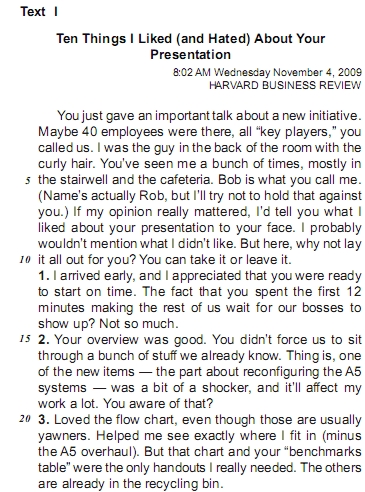
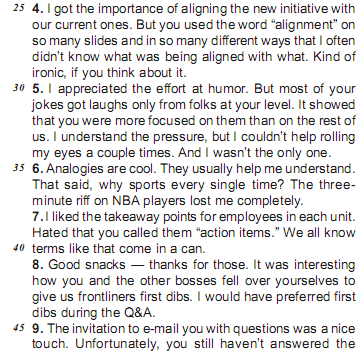
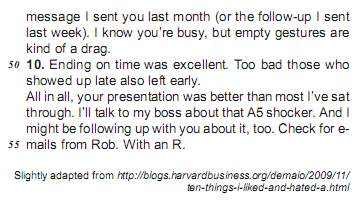
In "I would have preferred first dibs during the Q&A."(lines 43-44), "I would have preferred" could be correctly replaced by
- A.
I might have preferred.
- B.
I would never prefer.
- C.
I'll choose to have.
- D.
I could only prefer.
- E.
I'd rather opt out of.
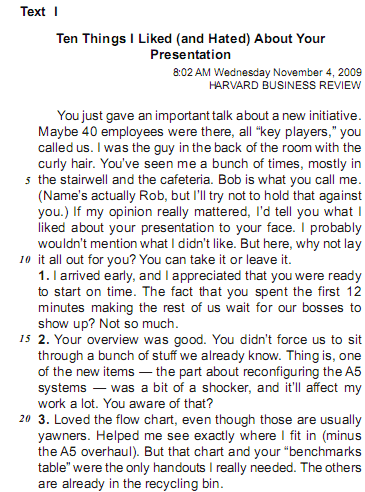
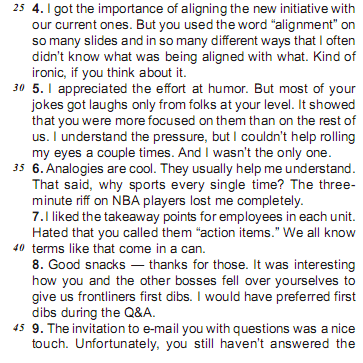
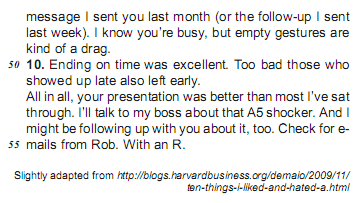
Check the only alternative in which the expression in boldtype has the same meaning as the item given.
- A.
"The fact that you spent the first 12 minutes making the rest of us wait for our bosses to show up?"(lines 12-14) – boast.
- B.
"You didn't force us to sit through a bunch of stuff we already know." (lines 15-16) – accept.
- C.
"Helped me see exactly where I fit in" (line 21) – belong.
- D.
"It showed that you were more focused on them than on the rest of us." (lines 31-33)-attracted to.
- E.
"And I might be following up with you about it, too."(lines 53-54) – investigating.

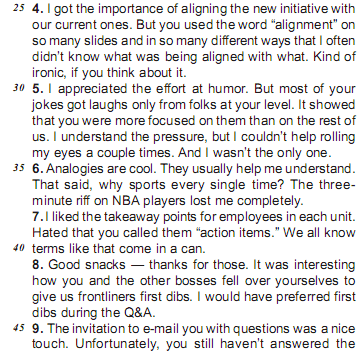
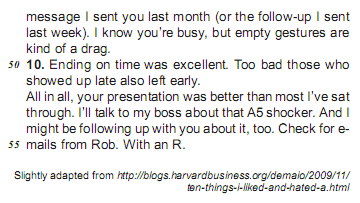
In terms of reference, it is correct to affirm that
- A.
"...it..." (line 10) refers to " ...presentation... " (line 8).
- B.
"The others..." (line 23) refers to "...handouts..." (line 23).
- C.
"...ones..." (line 26) refers to "...alignment(s)..." (line 26).
- D.
"...them..." (line 32) refers to "...jokes..." (line 31).
- E.
"...it," (line 54) refers to "...presentation..." (line 52).
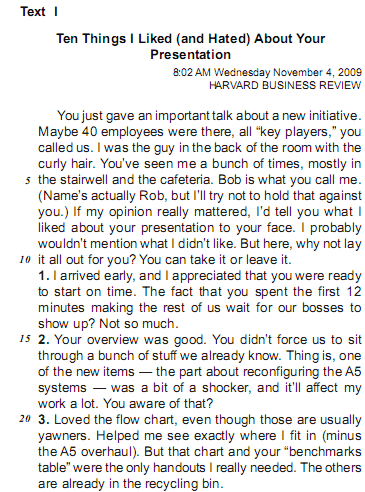
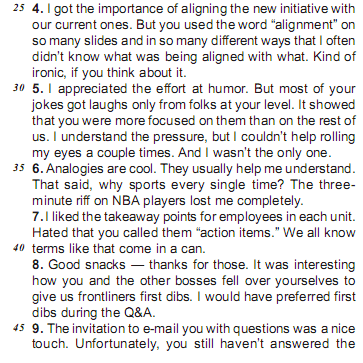
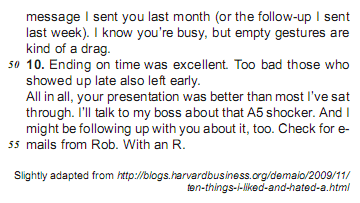
Mark the item that describes the tone of the closing line of Text I: "Check for e-mails from Rob. With an R." (lines 54-55).
- A.
A cordial tone that informs the speaker that Rob does not mind having his name misspelled.
- B.
A friendly, yet ironic tone, to make sure the speaker will not mistake Rob's name again.
- C.
A snobbish tone to alert the speaker of his incapacity to interact with employees in a receptive way.
- D.
An unexpectedly threatening tone indicating that Rob will eventually get back at the speaker.
- E.
An impolite tone to remind the speaker of how rude he usually is at work when he forgets people's names.
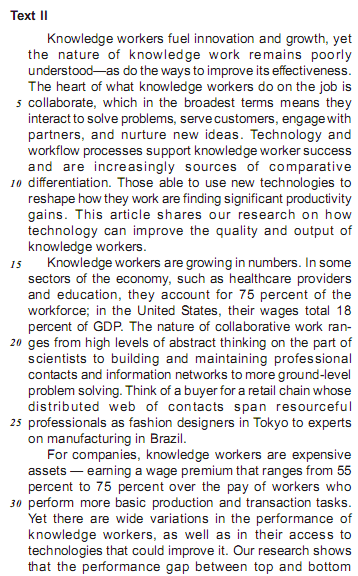
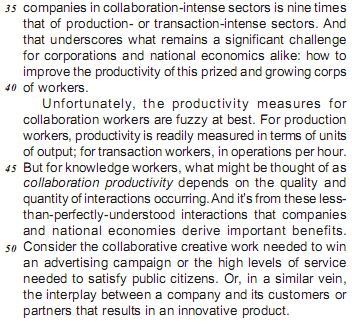
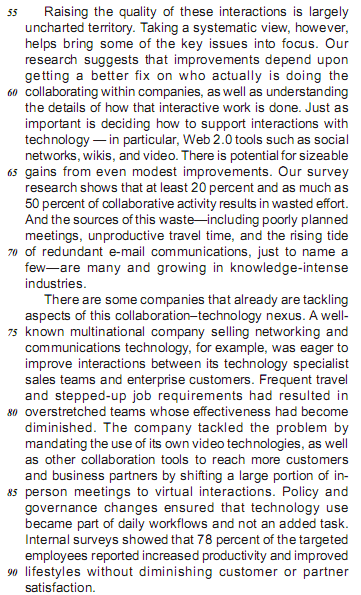
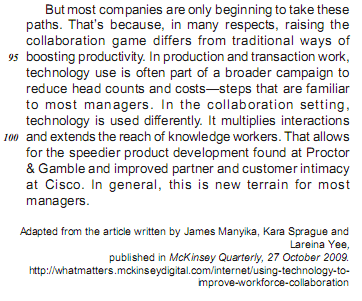
Choose the title that appropriately matches the focus of Text II.
- A.
Using technology to improve workforce collaboration
- B.
Companies reject innovative communications softwares
- C.
Knowledge workers' productivity is lower than expected
- D.
Frequent travel and over-tired workers boost job effectiveness
- E.
Maximizing knowledge workers' basic computer maintenance skills

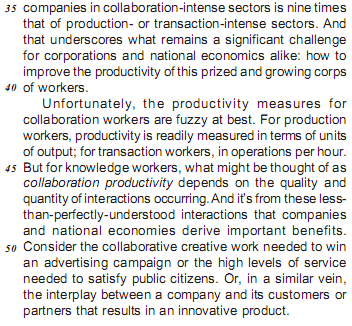
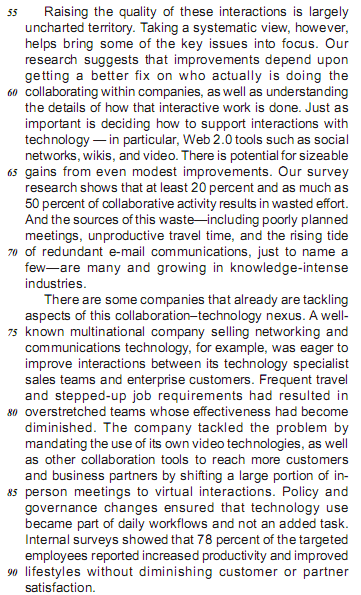
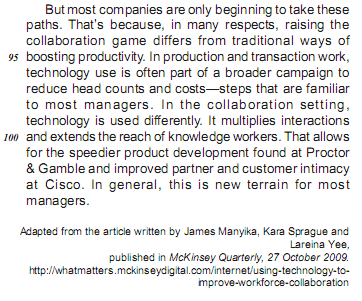
The fragment "as do the ways to improve its effectiveness." (line 3) refers to the fact that
- A.
the best strategy to enhance productivity in all sectors is fueling innovation.
- B.
it is still not clear how to attain higher standards in knowledge-intensive jobs.
- C.
improving the productivity of knowledge workers is a priority in all companies.
- D.
growth in technological innovation is not easily understood by customers and company partners.
- E.
knowledge workers do not grasp the meaning of effective collaboration with their fellow company staff members.
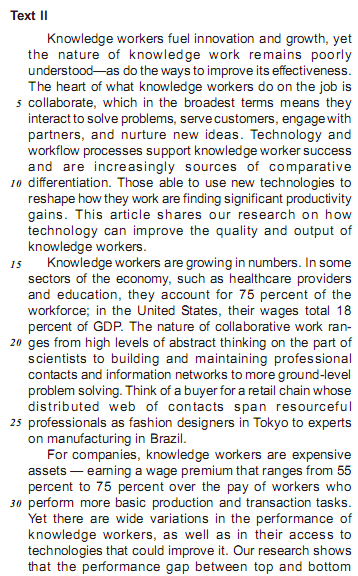
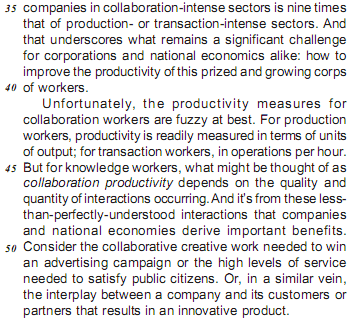
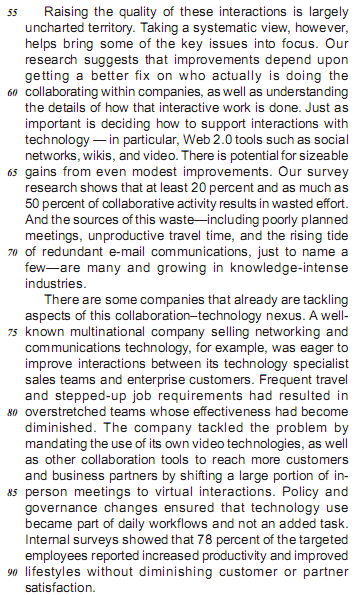
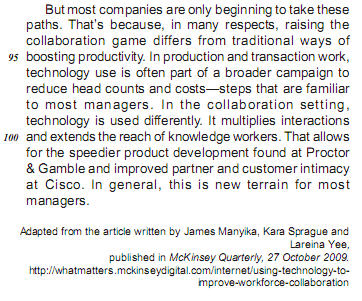
According to paragraphs 2 and 3 (lines 15-40), it is correct to affirm that knowledge workers in the U.S.
- A.
make up a declining labor force in the market.
- B.
constitute a tiny share of the economically-active population.
- C.
represent approximately one-fifth of the nation's economic performance.
- D.
may vary greatly in performance according to their access to technology.
- E.
earn wages that are slightly higher than workers in manual or transactional jobs.
All of the following can be considered knowledge workers, EXCEPT
- A.
production line technicians.
- B.
buyers for a retail chain.
- C.
university professors.
- D.
fashion designers.
- E.
scientists.
Web 2.0 tools are defined as "a category of new Internet tools and technologies created around the idea that the people who consume media, access the Internet, and use the Web shouldn't passively absorb what's available... These new tools include, but are by no means limited to, blogs, social networking applications, RSS, social networking tools, and wikis."
(http://www.techsoup.org/toolkits/web2/)
The authors of Text II acknowledge that such tools
- A.
will make very little impact on collaborative activity that results from business trips and email exchanges.
- B.
would be the only alternative to unsuccessful business meetings and fruitless trips as they help track who does the 'talking' and the 'doing'.
- C.
can never be used to improve the social networking in the factory floor, among top and middle management, and between enterprises and consumers.
- D.
will certainly avoid all ineffective email messages and old-fashioned managerial meetings that are considered unproductive communication channels.
- E.
should be adopted by companies to raise the effectiveness of interaction among co-workers and between company employees and their clients or service providers.
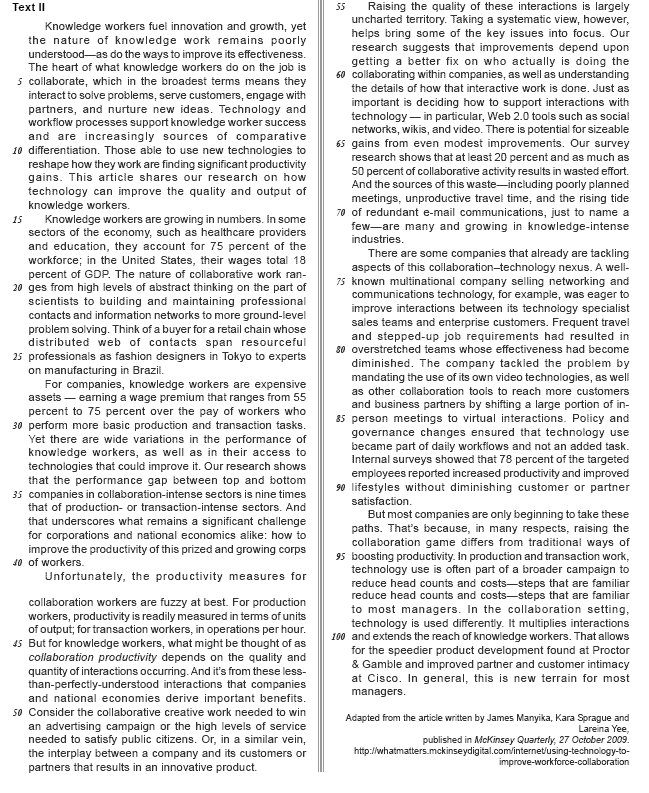
The expressions "in a similar vein" (line 52) and "just to name a few" (lines 70-71) express ideas that are similar to those denoted by, respectively,
- A.
likewise;for instance.
- B.
moreover;especially.
- C.
in addition;accordingly
- D.
nonetheless;in sum.
- E.
in view of that;justifyingly.


